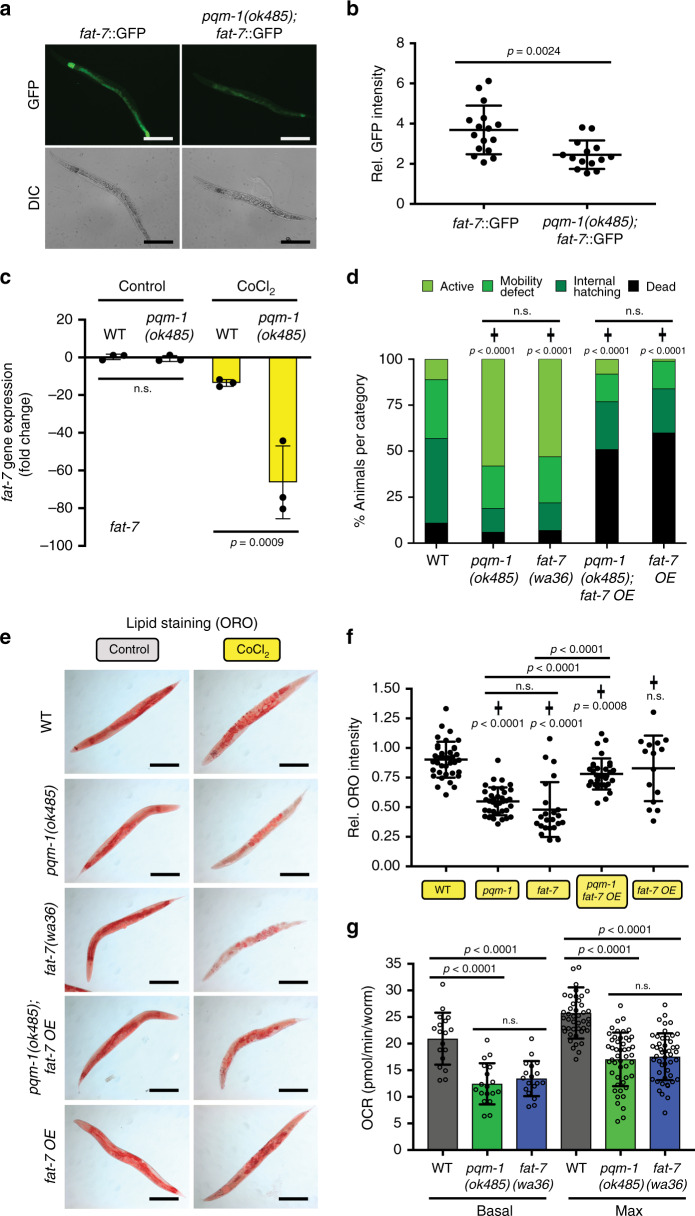Fig. 4. FAT-7 functions as a downstream PQM-1 target regulating hypoxic fat levels, oxygen consumption rates, and survival.
a, b PQM-1 positively regulates fat-7 expression in hypoxic conditions based on a fat-7p::fat-7::GFP translational reporter (a) and its quantification (b); fat-7::GFP (n = 16), pqm-1(ok485);fat-7::GFP (n = 14). Animals were exposed to 5 mM CoCl2 at a late larval (L4) stage for 24 h. Three independent experiments. c pqm-1- and CoCl2-dependent regulation of endogenous fat-7 determined by RT-qPCR (n = 3 biological replicates) following 5 mM CoCl2 exposure for 20 h at early adulthood. Two-tailed t-test (b, c), mean ± SD, ns = not significant. d Survival and matricide analysis of indicated C. elegans strains exposed to 5 mM CoCl2 at the early adulthood stage (early day-1 of adulthood stage) for 50 h. (✝) indicates mutant versus wild type strain, Chi-square analysis; WT (N2) (n = 136), pqm-1(ok485) (n = 87), fat-7(wa36) (n = 76), pqm-1(ok485);fat-7 OE (n = 61), fat-7 OE (n = 62); three independent experiments. e Oil Red O-based lipid staining of animals subjected to control and chemical hypoxia conditions. Animals were exposed to 2.5 mM CoCl2 at the early day-1 of adulthood stage for 44 h followed by Oil Red O staining (e) and whole worm quantification of fat levels (f). Quantification values were normalized to the mean value of WT control without CoCl2 (Supplementary Fig. 4e). WT (n = 37), pqm-1(ok485) (n = 36), fat-7(wa36) (n = 23), pqm-1(ok485);fat-7 OE (n = 32), fat-7 OE (n = 15); scale bars: 200 µm (a, e); three independent experiments. g Measurement of oxygen consumption rates. The uncoupler FCCP was injected twice (10 µM each injection) to obtain maximal oxygen consumption rates. For each strain six biological repeats, each consisting of approximately 20–25 worms, have been repeatedly measured to obtain OCR values (source data file). Three independent experiments were performed. Two-tailed t-test (f, g), mean ± SD, (✝) indicates mutant versus wild type strain (f); ns = not significant. Animals were synchronized at the L4 larval stage for adult analyses.

